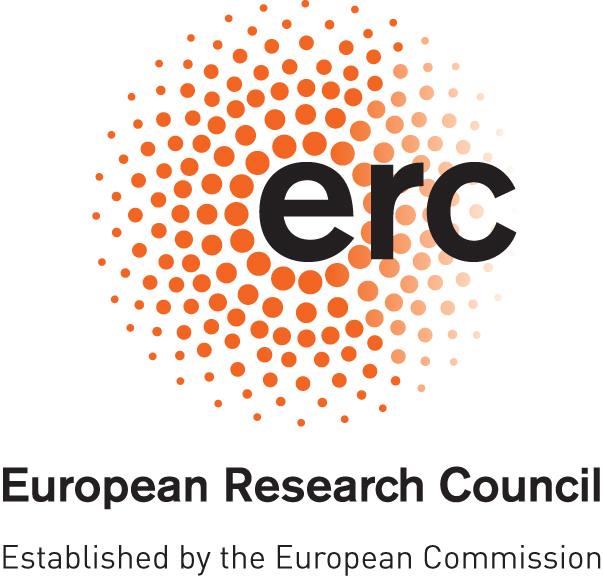Steve Furber

Professor Emeritus
email:
steve.furber@manchester.ac.uk
Other contact details
New
Honorary DSc from Oxford University (2023)
Biography
Steve Furber CBE FRS FREng is Professor Emeritus in the Department of Computer Science at the University of Manchester, UK. After completing a BA in mathematics and a PhD in aerodynamics at the University of Cambridge, UK, he spent the 1980s at Acorn Computers, where he was a principal designer of the BBC Microcomputer and the ARM 32-bit RISC microprocessor. Over 250 billion ARM-powered chips have since been manufactured, powering much of the world's mobile and embedded computing. He moved to the ICL Chair of Computer Engineering at Manchester in 1990 where he led research into asynchronous and low-power systems and, more recently, neural systems engineering, where the SpiNNaker project delivered a computer incorporating a million ARM processors optimised for brain modelling applications.
Steve served as Head of the Department of Computer Science in the Victoria University of Manchester from 2001 up to the merger with UMIST in 2004.
Fellowships and Awards
Steve is a Fellow of the Royal Society, the Royal Academy of Engineering, the British Computer Society, the Institution of Engineering and Technology and the IEEE, a member of Academia Europaea and a Chartered Engineer. In 2003 he was awarded a Royal Academy of Engineering Silver Medal for "an outstanding and demonstrated personal contribution to British engineering, which has led to market exploitation". He held a Royal Society Wolfson Research Merit Award from 2004 to 2009. In 2007 he was awarded the IET Faraday Medal, "...the most prestigious of the IET Achievement Medals." Steve was awarded a CBE in the 2008 New Year Honours list "for services to computer science". He was a 2010 Millenium Technology Prize Laureate. In 2012 he was made a Fellow of the Computer History Museum, Mountain View, CA, USA. He has Honorary DScs from the University of Edinburgh (2010), Anglia Ruskin University (2012), Queen's University, Belfast (2015) and Oxford University (2023). He was a recipient of a 2013 IEEE Computer Society Computer Pioneer Award. He received, with Sophie Wilson, the 2013 Economist Innovation Award for Computing and Telecommunications for co-creating the ARM. In January 2014 he was included in the Science Council list of 100 leading UK practising scientists. He was made a Distinguished Fellow of the BCS in 2014, and also received the 2014 BCS Lovelace Medal. He was awarded, jointly with Sophie Wilson, the 2016 Royal Society Mullard Award. He was a recipient, with David Patterson, John Hennessy and Sophie Wilson, of the 2022 US National Academy of Engineering Charles Stark Draper Prize for Engineering.
Public and professional service
Steve has served as a member and chair of the UKCRC executive, and as Vice-President Learned Society and Knowledge Services and a Trustee of the BCS.
In 2002 Steve served as Specialist Adviser to the House of Lords Science and Technology Select Committee inquiry into 'Innovations in Microprocessing', which resulted in the report "Chips for Everything: Britain's opportunities in a key global market"
Steve chaired the Royal Society study into Computing in Schools advisory group, which resulted in the report Shut down or restart? in January 2012. He also chaired the advisory group for the 2017 follow-up report After the reboot: computing education in UK schools.
Steve was chair of sub-panel B11 Computer Science and Informatics for REF2014.
Technology Exploitation
In December 2003 Silistix Limited was formed to commercialise self-timed Network-on-Chip technology developed within the APT group. Steve was an observer on the Silistix Board and chaired the Technical Advisory Committee. The company ceased trading in 2009.
Cogniscience Limited is a University company established to exploit IP arising from the APT research into neural network systems.
Steve's books
An overview of the world's leading 32-bit embedded processor: ARM System-on-Chip Architecture (2000).
An Open Access book summarising the first 20 years of the SpiNNaker project: SpiNNaker: A Spiking Neural Network Architecture (2020).
Research interests
- Neural systems engineering
-
The classical computational paradigm performs impressive feats of calculation but fails in some of the simplest tasks that we humans undertake with ease and from a very early age. Biological neural networks are proof that there are alternative computational architectures that can outperform our fastest systems in tasks such as face recognition, speech processing, and the use of natural language. Brains are complex highly-parallel systems that employ imperfect and slow (though exceedingly power-efficient) components in asynchronous dynamical configurations to carry out sophisticated information processing functions. Note the word asynchronous in the previous sentence! Many aspects of brain function are little-understood, but we hope that our deep understanding of the engineering of complex asynchronous systems may be of use in the Grand Challenge of understanding the architecture of brain and mind.
At present our major activity here is the SpiNNaker project, where we have built a massively-parallel chip multiprocessor system for modelling large systems of spiking neurons in real time. The machine incorporates a million ARM processors linked together by a communications system that can achieve the very high levels of connectivity observed in biological neural systems. Such a machine is capable of modelling two hundred million neurons in real time (which is still a fraction of 1% of the human brain).
Research funding




The design and construction of the SpiNNaker machine was funded by EPSRC. Further support and software development, with provision of internet access to the machine, was supported by the EU through the ICT Flagship Human Brain Project. Research using the machine was supported by the European Research Council under the European Union's Seventh Framework Programme (FP/2007-2013) ERC Grant Agreement no. 320689 BIMPC - "Biologically-Inspired Massively-Parallel Computation". The research has also received support from ARM Ltd. We are grateful to all these funding bodies and companies for their support.
Publications
Details of Steve's publications can be found on the APT group publication pages.
